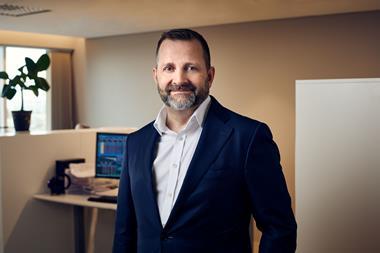European pension funds are strong supporters of pensions consultants. According to the responses to a survey undertaken by IPE, the overwhelming majority of (91%) – use external pensions consultants.
Of those which do not, just 6% say they have in-house expertise. One respondent however went further: “Our pension fund has one of the highest surpluses – 125% – in Switzerland,” he writes. “Other pension funds use consultants and are highly under-covered. So why would we need them?”
Of those pension funds using external consultants, most had engaged three or fewer firms. The biggest number of firms used was seven, although one other respondent uses anything between five and 10 outside consultants.
The most common purpose for which external firms were hired is actuarial services. This was the case with a massive 80% of respondents. Close behind came investment consultancy, with a 76% take up. Next comes risk management, with 41% of respondents hiring this in from outside.
Equally popular are benefits consultancy and information technology, bought in by just under 30%.
Last came international consultancy, just 18% are interested in having consultants to advise on this. Trailing are a mix of other functions, the most common being legal, admininstration, tax and auditing.
There is a fairly even split between those funds which use consultants on an ongoing basis as around three quarters of respondents do and those which use them on a project by project basis, as 60% do. Quite clearly many respondents use both bases on which to hire consultants, depending on the type of services required.
Asked to estimate what their fund’s total payments to external consultants were likely to be on an annual basis, the most common bracket selected was E10k to E50k, with 29% expecting their bills to fall within this range. The next most popular range was E250k to E500k, followed by E100k to E250k, then E50k to E100k. These were the likely costs reported by 21%, 18% and 12% respectively.
In terms of the expected consultants’ fees for two particular projects, respondents were invited to be more specific.
The expected fee for a one-off ALM study varies between E5k and E100k, with the average equal to E34.9k. As might have been expected, the fee for a single investment manager search was less. It ranged between E1k and E50k, giving an average of E17.9k.
Those pension funds responding to the survey certainly appear to be cost-conscious: when we asked if they pay their consultants annual retainers, a large majority 71% – say they do not.
At the same time, most a good 80% consider that their consultants give them value for money.
But asked how they judged whether this to be the case, a worrying number admitted that they were not in a position to assume anything else. “We do not have to recruit,” says one fund, while another simply answers: “You cannot do the job without them.”
But this is not good enough for one of the few respondents who did consider that external consultancy services are not up to scratch. He complains: “Some of the low end stuff is done by poor quality staff with a lack of experience, but you are still charged E100 an hour – and they are slow!”
Generally, however, the value of external consultants was assessed by the quality of information they produce, whether goals are met, the amount of time and money saved compared with doing the work in-house, and fund performance.
When it comes to ensuring that the pension funds obtain value for money, similar principles were also suggested, although one privileged respondent says “We stress that they treat us as their best client”.
Failing that, however, the golden rule is to be specific right from the start of a project or contract. This involves defining goals, terms and cost. The pension fund should also be clear about what can be achieved in-house, and what services the consultant is required to perform.
The final agreement between fund and supplier should be backed by a robust contract, with a clear definition of the services to be provided. Once work starts, the consultant should report regularly, so the pension fund trustees can evaluate the results.
Another policy used by several respondents is to work out how much it would cost to carry out the work in-house, and compare that with the consultants’ fees.
Pension fund trustees can keep abreast of the market rates for consultancy fees by talking to other funds in their peer group. A more formal way of finding out the going rate is to invite tenders for services. Some respondents suggested doing this occasionally, while others carry out a tendering exercise on a more regular basis, for example, every three years.
Respondents also suggested the obvious – having regular contact with consultants, to iron out any potential problems with fees as early as possible.
Just under half of respondents say that one or more of their external consultants were part of an external group, for example, an insurance group.
However, this did not on the whole worry them. Of those respondents in this situation, only 19% say they think it affects the impartiality of the advice obtained.
One respondent says: “It leads to very actuarially orientated responses and recommendations.” Another comments: “It affects professional indemnity and risk averse issues. There is also at times a lack of both independence and relevant experience.”
However, others make it clear they would stand up for their rights – one saying bluntly: “If this did affect their impartiality, they know I would immediately stop them working for us.” And others aim to manage the issue: “We make sure not to use consultants in situations where they may have conflicts of interest,” says another fund.
The survey asked respondents to name, in order of preference, up to five consultancy firms which they respected, whether or not they actually used them.
Three quarters of funds replied, two firms stood head and shoulders above the rest. Mercer and Watson Wyatt both received 44% of the possible preferences, with both receiving the same first preferences coming to 24% the total. However, Mercer pip their rival at the post by garnering more second placings.
Other names in the frame were in order of ranking Hewitt, Hymans Robertson, with Towers Perrin, and Frank Russell and Aon, ranking equally in sixth position.
Given the pan-European nature of the survey, it was always going to be the case that the big international firms came out best. Other companies mentioned include Conac, Fixage, Berquin and Ortec.













